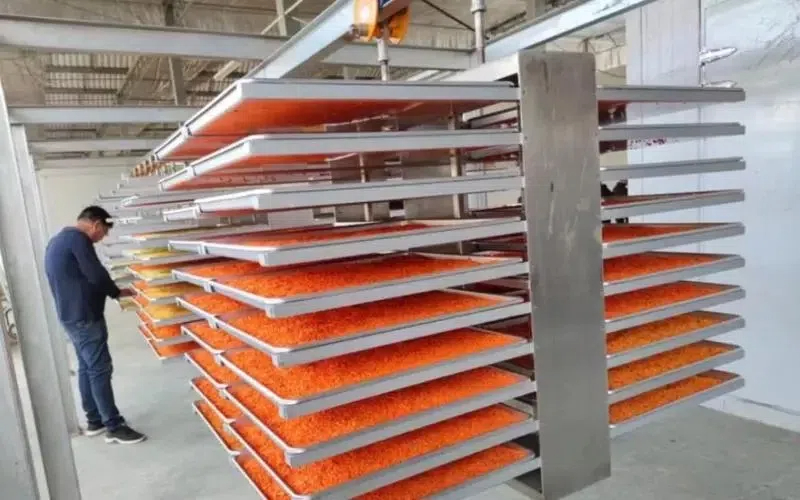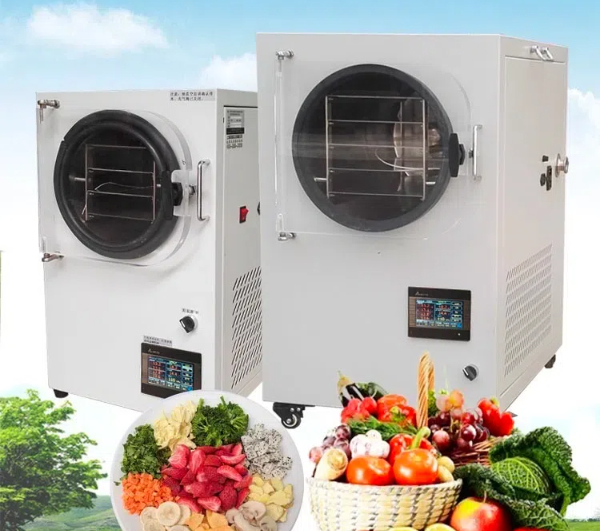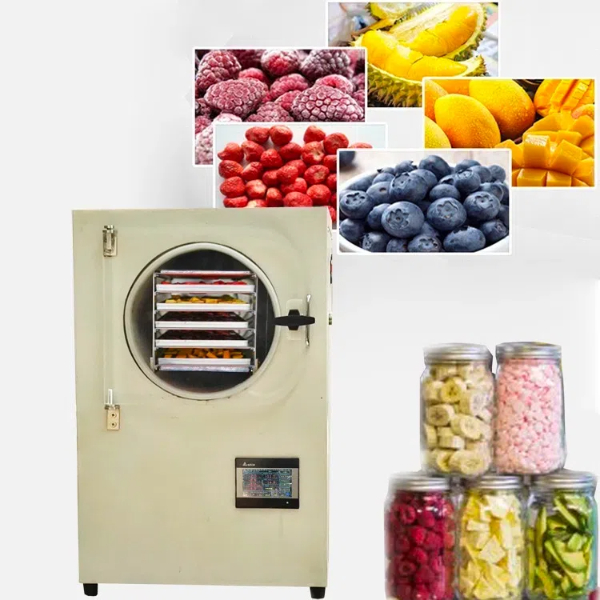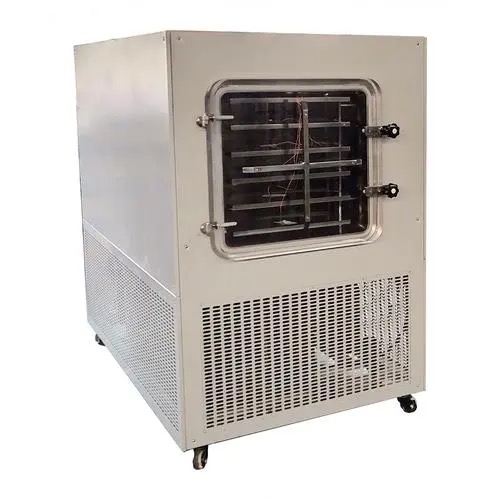
Content Menu
● Introduction to Freeze-Drying Technology in Australia
● Understanding Freeze-Drying: The Science Behind the Magic
● The Rise of Freeze Dry Food Machines in Australia
>> Preserving Australia's Unique Produce
>> Addressing Food Waste
>> Supporting the Export Market
● Types of Freeze Dry Food Machines Available in Australia
>> Home Freeze Dryers
>> Commercial Freeze Dryers
>> Industrial Freeze Dryers
● Leading Brands of Freeze Dry Food Machines in Australia
● Applications of Freeze Dry Food Machines in Australia
>> Agriculture and Horticulture
>> Bush Tucker and Indigenous Foods
>> Pet Food Industry
>> Outdoor and Adventure Foods
● Benefits of Using Freeze Dry Food Machines in Australia
>> Extended Shelf Life
>> Nutritional Preservation
>> Flavour Retention
>> Lightweight and Convenient
● Challenges and Considerations
>> Initial Investment
>> Energy Consumption
>> Learning Curve
● The Future of Freeze-Drying in Australia
>> Sustainable Food Production
>> Innovation in Food Products
>> Support for Remote Communities
● Conclusion
● Frequently Asked Questions
>> Q1: How long do freeze-dried foods last in Australia's climate?
>> Q2: Can I freeze-dry any type of food in a home freeze dryer?
>> Q3: Are there any Australian regulations regarding the use of freeze dry food machines for commercial purposes?
>> Q4: How does the energy consumption of freeze-drying compare to other food preservation methods in Australia?
>> Q5: Can freeze-drying help preserve native Australian foods?
Introduction to Freeze-Drying Technology in Australia
Australia, known for its diverse and unique produce, has embraced freeze-drying technology as a means to preserve its culinary treasures. Freeze dry food machines in Australia have revolutionized the way Aussies approach food preservation, offering a method that maintains flavour, nutrients, and texture far better than traditional drying or freezing methods. From the sun-kissed fruits of Queensland to the hearty vegetables of Tasmania, freeze-drying is helping to capture the essence of Australian cuisine.
Understanding Freeze-Drying: The Science Behind the Magic
Freeze-drying, also known as lyophilization, is a sophisticated preservation process that removes moisture from food while maintaining its structure and nutritional value. The process involves three main steps:
1. Freezing: The food is rapidly frozen to preserve its structure.
2. Primary drying: The frozen water is removed through sublimation under vacuum conditions.
3. Secondary drying: Any remaining bound water is removed through desorption.
This process results in a product that can be stored for extended periods without refrigeration and can be quickly reconstituted with water.
The Rise of Freeze Dry Food Machines in Australia
In recent years, Australia has seen a significant increase in the adoption of freeze dry food machines, both for home use and commercial applications. This surge in popularity can be attributed to several factors:
Preserving Australia's Unique Produce
Australia's diverse climate allows for the cultivation of a wide variety of fruits, vegetables, and herbs. Freeze-drying technology enables producers to preserve these unique flavours year-round, ensuring that consumers can enjoy the taste of summer fruits even in the depths of winter.
Addressing Food Waste
With increasing awareness about food waste, many Australians are turning to freeze-drying as a way to preserve excess produce. Home freeze dryers allow families to save money and reduce waste by preserving foods that might otherwise spoil.
Supporting the Export Market
Australian-made freeze-dried products are gaining popularity in international markets. The lightweight nature of freeze-dried foods makes them ideal for export, allowing Australian businesses to share their unique flavours with the world.

Types of Freeze Dry Food Machines Available in Australia
The Australian market offers a range of freeze dry food machines to suit different needs and budgets:
Home Freeze Dryers
Compact and user-friendly, these machines are designed for household use. They typically have a smaller capacity but are perfect for preserving garden produce or creating homemade camping meals.
Commercial Freeze Dryers
These larger machines are designed for small to medium-sized businesses. They offer increased capacity and efficiency, making them suitable for artisanal food producers or restaurants looking to expand their product lines.
Industrial Freeze Dryers
Large-scale operations in Australia use industrial freeze dryers capable of processing tonnes of product. These machines are essential for major food manufacturers and exporters.
Leading Brands of Freeze Dry Food Machines in Australia
Several reputable brands offer freeze dry food machines in Australia:
1. Harvest Right: Known for their home and small commercial units.
2. GEA: Offers a range of industrial-scale freeze dryers.
3. Cuddon Freeze Dry: An Australian company specializing in custom freeze-drying solutions.
4. Freeze Dry Australia: Provides both equipment and contract freeze-drying services.
When choosing a freeze dry food machine in Australia, consider factors such as capacity, energy efficiency, and after-sales support.
Applications of Freeze Dry Food Machines in Australia
Freeze-drying technology has found diverse applications across various sectors in Australia:
Agriculture and Horticulture
Australian farmers are using freeze-drying to preserve surplus crops, reducing waste and creating value-added products. For example, freeze-dried strawberries from Queensland have become a popular snack and baking ingredient.
Bush Tucker and Indigenous Foods
Freeze-drying is helping to preserve and promote traditional Aboriginal foods. Native fruits like quandong and Davidson plum are being freeze-dried to create unique, shelf-stable products that showcase Australia's indigenous cuisine.
Pet Food Industry
Australian pet food manufacturers are using freeze-drying to create premium, preservative-free pet treats and meals. These products often feature locally-sourced meats and produce.
Outdoor and Adventure Foods
With Australia's love for outdoor activities, freeze-dried meals have become a staple for hikers, campers, and adventurers. Local companies are creating freeze-dried versions of classic Australian dishes for easy preparation in the bush.

Benefits of Using Freeze Dry Food Machines in Australia
The adoption of freeze dry food machines in Australia offers numerous advantages:
Extended Shelf Life
Freeze-dried foods can last for years without refrigeration, making them ideal for long-term storage and emergency preparedness in Australia's sometimes harsh climate.
Nutritional Preservation
Unlike other preservation methods, freeze-drying retains most of the nutritional value of the original food. This is particularly important for preserving the health benefits of Australia's nutrient-rich produce.
Flavour Retention
Freeze-drying locks in the flavours of fresh food, allowing Australians to enjoy the taste of local produce year-round.
Lightweight and Convenient
Freeze-dried foods are lightweight and easy to transport, making them ideal for Australia's vast distances and outdoor lifestyle.
Challenges and Considerations
While freeze dry food machines offer many benefits, there are some challenges to consider:
Initial Investment
Freeze dryers can be expensive, particularly for small businesses or home users. However, many Australians find that the long-term savings and benefits outweigh the initial cost.
Energy Consumption
The freeze-drying process can be energy-intensive. In Australia, where energy costs can be high, it's important to consider energy-efficient models and potentially explore renewable energy options.
Learning Curve
Proper use of freeze dry food machines requires some knowledge and experience. Many suppliers in Australia offer training and support to help users get the most out of their equipment.
The Future of Freeze-Drying in Australia
As technology advances and awareness grows, the future looks bright for freeze-drying in Australia:
Sustainable Food Production
Freeze-drying is set to play a crucial role in Australia's efforts to create a more sustainable food system, reducing waste and extending the shelf life of local produce.
Innovation in Food Products
Australian food innovators are using freeze-drying to create new and exciting products, from instant coffee alternatives to novel snack foods.
Support for Remote Communities
Freeze-dried foods could help improve food security in remote Australian communities, providing access to a wider variety of nutritious foods year-round.
Conclusion
Freeze dry food machines in Australia are more than just a trend; they represent a significant shift in how Australians approach food preservation and production. From home kitchens to large-scale industrial operations, freeze-drying technology is helping to preserve the unique flavours of Australia while reducing waste and creating new opportunities for the food industry.
As the technology continues to evolve and become more accessible, we can expect to see even more innovative applications of freeze-drying in Australia. Whether you're a home gardener looking to preserve your harvest, a business owner exploring new product lines, or simply someone interested in long-lasting, nutritious food options, freeze-drying offers exciting possibilities.
By embracing this technology, Australia is not only preserving its culinary heritage but also positioning itself at the forefront of food innovation and sustainability. The future of food preservation in the Land Down Under is looking fresher than ever, thanks to the power of freeze dry food machines.

Frequently Asked Questions
Q1: How long do freeze-dried foods last in Australia's climate?
A1: When properly packaged and stored, freeze-dried foods can last up to 25 years in Australia. However, it's important to keep them in a cool, dry place away from direct sunlight to maximize their shelf life.
Q2: Can I freeze-dry any type of food in a home freeze dryer?
A2: While most foods can be freeze-dried, some are better suited to the process than others. Foods with high fat content may not freeze-dry well. However, fruits, vegetables, meats, and many prepared meals are excellent candidates for freeze-drying at home.
Q3: Are there any Australian regulations regarding the use of freeze dry food machines for commercial purposes?
A3: Yes, commercial food producers using freeze dry food machines must comply with Food Standards Australia New Zealand (FSANZ) regulations. This includes adhering to food safety standards and proper labeling of freeze-dried products.
Q4: How does the energy consumption of freeze-drying compare to other food preservation methods in Australia?
A4: Freeze-drying is generally more energy-intensive than other drying methods due to the freezing and vacuum processes involved. However, many modern freeze dryers are designed with energy efficiency in mind. In Australia, where energy costs can be high, it's worth considering energy-efficient models or exploring the use of renewable energy sources to power freeze dry food machines.
Q5: Can freeze-drying help preserve native Australian foods?
A5: Absolutely! Freeze-drying is an excellent method for preserving native Australian foods, also known as bush tucker. It helps maintain the unique flavors and nutritional properties of foods like Kakadu plum, wattleseed, and native berries, allowing these traditional ingredients to be enjoyed year-round and shared with a wider audience.












